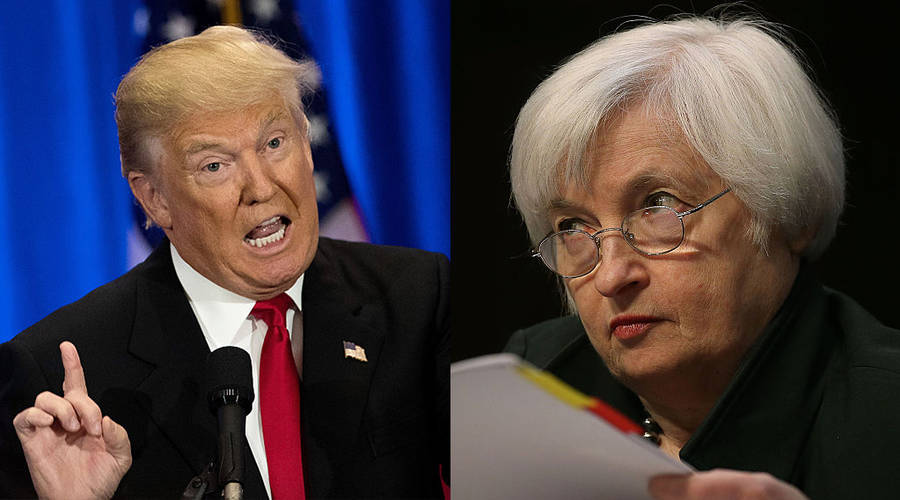Trump on accelerator while Fed tapping the breaks
While the headlines have been dominated by talk of whether or not President Trump can get Congress to work with him and to just what extent the Republicans will unite behind him, the bigger but much less obvious battle is between the White House and the Fed. While the Trump administration is talking all about accelerating the economy, the Fed is jawboning tapping the brakes.
The essential point, however, is that the Fed does not want faster growth. Fed officials estimate that the economy is already growing at something like the maximum sustainable pace. Fed officials predicted in December that the economy would expand 2.1 percent this year, slightly faster than the 1.8 percent pace they regard as sustainable. The Fed will publish new projections on Wednesday.
Spoiler alert, historically the Fed has always won this battle.
As investors and savers we would love nothing more than to finally see this economy back to normalized interest rates, with the Atlanta Fed’s GDPNow forecasting an abysmal 1.2 percent growth rate for the first quarter, after the sorry sub 2 percent we saw last quarter, this is hardly an economy that is at risk of overheating.
While Trump’s team is heralding bringing back jobs into the U.S., implying that there will be more jobs available to job seekers, the Fed is singing a different tune.
Fed officials, by contrast, see the pace of job growth as unsustainable. The unemployment rate fell below 5 percent last May. Since then, employment has continued to expand at an average of 215,000 jobs a month — more than twice the job growth necessary to keep pace with population growth. The faster growth is good news for the economy, indicating that adults who gave up on finding jobs are returning to work. The question is how long that can continue.
Team Trump is looking to accelerate the economy through a series of fiscal policies ranging from the repeal of the Affordable Care Act, to tax cuts to regulatory reform. The market is pricing in a high success rate with rapid implementation and negating, as it often does, the potential impact of rate hikes.
Recall that from June 2004 to June 2006 the FOMC hiked its federal-funds rate 17 consecutive times over 24 months for a massive 425 basis points total, more than quintupling the Federal Funds rate, which ultimately burst the economic and market bubble.
The bottom line is that fiscal and monetary policy takes time to have an impact, while today’s markets are priced for more immediate gratification. That’s a bit like buying that dress I love for next week’s event two sizes too small, because hey, I’m planning on hitting the gym hard! Optimism is great, but a little realism makes for longer-term success.
Source: Trump Wants Faster Growth. The Fed Isn’t So Sure. – The New York Times


